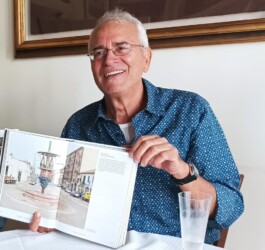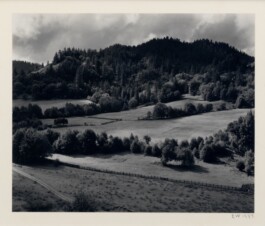Dionisio Gavagnin. Photography of the California Gold Rush, 1848–1855
16.11.2025, 4:30 pm
Within the context of the exhibition "America: Between Dreams and Disenchantment", we are pleased to host a conversation with Dionisio Gavagnin, co-curator of the show, who will guide us back to the origins of American photography and its connection with the “spirit” of the United States.
Starting from the arrival of the daguerreotype across the ocean—brought by Samuel Morse in 1839—Gavagnin will retrace the pioneering phase in which photography spread both as a profession and as a documentary tool, from the first images by Mathew Brady to the works produced in the wake of the Gold Rush.
This journey, in the second half of the nineteenth century, intertwines with the so-called “American Renaissance” in literature and Transcendentalist philosophy: Emerson, Thoreau, Melville, Whitman, and others helped forge an idea of nature as a spiritual and democratic experience, destined to shape photographic imagery as well.
With Carleton Watkins and his “photo-topographic” method, a distinctly American vision took form—one that united scientific precision with symbolic depth—paving the way for the great photographers of the Westward expansion, such as Timothy O’Sullivan and William Henry Jackson.
Gavagnin’s talk will accompany us on this journey, showing how photography was able to narrate the birth of a cultural identity suspended between exploration, myth, and disenchantment.


Bio
A scholar of modern and contemporary art and literature, with a particular focus on poetry, Dionisio Gavagnin has published two volumes on the history of photography (Homini & Domini, 2011; Fini & Confini, 2018) and three poetry collections with Campanotto. He has curated exhibitions for museums, foundations, and galleries, including "Le stanze dell’arte" (2012), "Body" (2015), "Paesaggi anomali" (2016), "Incontri-Incanti" (2018), "Il Grande Risveglio" (2021), and "Le donne e la Fotografia" (2021).
For Lab27, he co-curated in 2024 the exhibition "From Atget to Basilico. Archaeology in Seeing."
Dionisio Gavagnin. Photography of the California Gold Rush, 1848–1855
16.11.2025, 4:30 pm
Within the context of the exhibition "America: Between Dreams and Disenchantment", we are pleased to host a conversation with Dionisio Gavagnin, co-curator of the show, who will guide us back to the origins of American photography and its connection with the “spirit” of the United States.
Starting from the arrival of the daguerreotype across the ocean—brought by Samuel Morse in 1839—Gavagnin will retrace the pioneering phase in which photography spread both as a profession and as a documentary tool, from the first images by Mathew Brady to the works produced in the wake of the Gold Rush.
This journey, in the second half of the nineteenth century, intertwines with the so-called “American Renaissance” in literature and Transcendentalist philosophy: Emerson, Thoreau, Melville, Whitman, and others helped forge an idea of nature as a spiritual and democratic experience, destined to shape photographic imagery as well.
With Carleton Watkins and his “photo-topographic” method, a distinctly American vision took form—one that united scientific precision with symbolic depth—paving the way for the great photographers of the Westward expansion, such as Timothy O’Sullivan and William Henry Jackson.
Gavagnin’s talk will accompany us on this journey, showing how photography was able to narrate the birth of a cultural identity suspended between exploration, myth, and disenchantment.

